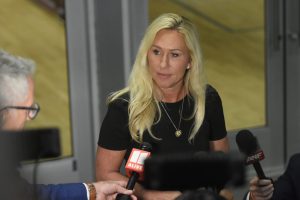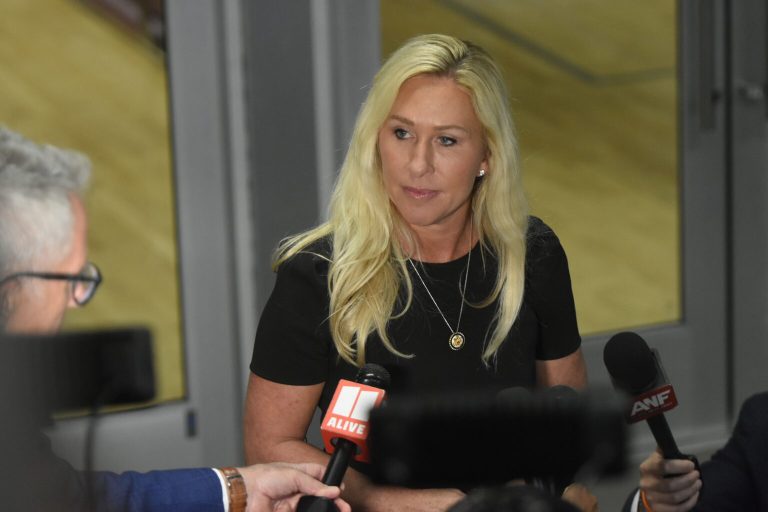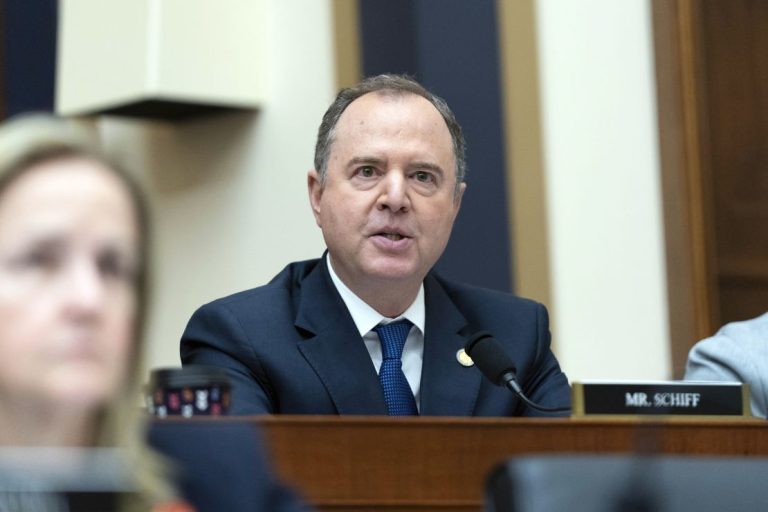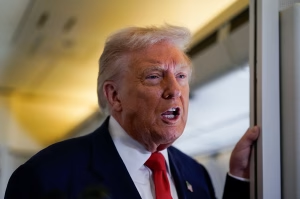Charlie Kirk’s Security Chief Breaks Silence, Debunks ‘Hand Signal’ Conspiracies Surrounding Assassinatio
The head of security for Turning Point USA founder Charlie Kirk is speaking publicly for the first time about the chaotic, painful, and highly scrutinized moments leading up to Kirk’s assassination—and the viral conspiracy theories that exploded online afterward.
Kirk, a rising conservative star and frequent presence on college campuses, was killed on September 10 during a live debate event hosted at Utah Valley University, stunning supporters and prompting a national conversation about political violence in the United States.
As graphic footage circulated across social media within minutes of the shooting, amateur “analysis” videos soon followed. Users dissected everything—from the angle of the bullet to the way security guards shifted their weight on stage. The most persistent theory involved claims that members of Kirk’s security detail were making covert “hand signals” just moments before the fatal shot was fired.
Now, the man responsible for that security team, Brian Harpole, is addressing the rumors head-on.
The Assassination That Shook Conservative America
Kirk, 31, was taking a question from an audience member when a single round fired from a nearby rooftop building struck him in the neck. Audience members began screaming and running for cover as medical personnel rushed the stage. Despite their efforts, Kirk died on site.
Police quickly identified and arrested Tyler Robinson, a 22-year-old Utah resident, who now faces charges including aggravated murder, obstruction of justice, evidence tampering, and multiple additional felonies. Robinson is scheduled to appear in court in January.
Investigators say the shot was fired from an elevated rooftop location facing the outdoor venue. The precision of the shot, combined with the political nature of the event, sparked immediate calls for a federal investigation.
But even before law enforcement could release its first public briefing, social media had already generated its own narrative.
Online Detectives Fixated on ‘Hand Signals’
Amateur sleuths began spreading the idea that Kirk’s own security guards had acted suspiciously in the seconds before the shot. Grainy clips showed two team members adjusting their shirts, pulling down their jacket sleeves, or lifting their hats—ordinary movements that were interpreted as coded signals.
One viral post directed at FBI Director Kash Patel read:
“These 2 men standing behind Charlie Kirk look like they were giving hand signals right before the shot went off… you might want to look into it!”
Others went further, suggesting the security team might have known about the assassination attempt—or even facilitated it.
These theories grew so widespread that Harpole said he couldn’t avoid them even if he wanted to. But as he explained on the Shawn Ryan Show podcast on November 17, the claims are not only wrong, but deeply offensive to the people who tried to save Kirk’s life.
Security Chief: ‘We Don’t Use Hand Signals for That—Ever.’
Harpole, a veteran security professional, acknowledged the public confusion but dismissed the “hand signal” narrative as pure fiction.
“If we needed to relay a message, then we’d say it on comms,” he explained. “If we notice something, we’re not going to use a hand signal.”
He elaborated further, saying that legitimate non-verbal signals used in professional security work are designed to be unmistakable, not subtle or ambiguous.
“Anything we use is something that can’t be confused with a man scratching his a**,” he said bluntly.
Harpole explained that if a team member did signal something urgent, they would immediately turn toward him for direction—a behavior that did not occur at any moment before the shooting.
The viral gesture in question? A guard adjusting his hat.
“That’s what triggered all of this,” Harpole said, sounding both frustrated and bewildered. “He touched his hat. People in the front row were scratching their noses, crossing their arms—everyone does stuff like that.”
‘It’s Not Good Communication’ — Harpole Says Real Protocol Was Followed
Harpole described the moments before the shooting as tense but not unusual. The team had logged several suspicious individuals earlier in the day, but none matching the roof position where the shooter ultimately struck.
During the podcast interview, he emphasized that all communication during an event like this is done through secure communications devices—not gestures that would be easily misinterpreted.
“It’s not good communication,” he said. “You can’t run a security operation based on vague gestures.”
Harpole also clarified that no team member signaled distress or alerted him to any unusual movement from the rooftop area prior to the shooting.
“If they had seen something, they would have been on me instantly,” he said.
Conspiracy Theories Quickly Turn Against Kirk’s Widow
While Harpole said he expected some bad-faith speculation about security protocols, what shocked him most was how quickly the internet turned its focus toward Kirk’s widow, Erika Kirk, accusing her of involvement in the assassination without a shred of evidence.
“That’s what makes me lose faith in people,” he said. “She’s a victim. That’s her husband. And now people without any proof are saying she played a part in killing him.”
Harpole condemned social platforms for allowing such claims to spread, arguing that the real-world consequences are severe.
“To make that accusation against someone who just watched her husband die? It’s cruel,” he said. “And the fact that platforms allow it—yeah, that gets to me.”
According to Harpole, Erika has been subjected to harassment, threats, and waves of disinformation since the shooting.
“There is not a single piece of evidence pointing to her,” he said. “But the internet doesn’t care.”
Security Chief Reflects on the Tragedy and Its Aftermath
The interview revealed a man still shaken by the event and the grief of losing someone he was responsible for protecting.
Harpole said he replayed the moment “hundreds of times” in his head, scrutinizing every movement, every sound, every shadow.
“We were scanning constantly,” he said. “We were doing our job. But some threats are positioned so well, and so far outside normal parameters, that you can’t always reach them in time.”
He described the security team’s frantic response after the shot, saying multiple members ran in different directions—some to shield the crowd, others to pursue a potential vantage point for the shooter.
“We still have team members in counseling over what happened,” he said.
Investigators Still Sorting Through Evidence
Law enforcement officials are continuing to process digital evidence, witness statements, and forensic ballistics reports. Prosecutors have not yet provided a full motive for the shooting, though investigators believe it was politically motivated.
Robinson, the alleged shooter, is being held without bail.
The Secret Service and FBI have both been involved in evaluating whether the assassination was part of a broader plot, though no additional suspects have been identified.
Harpole’s Message to the Public: ‘Scrutinize, Don’t Invent’
Harpole closed the interview by urging Americans to distinguish between legitimate questions and dangerous speculation.
“I get it—people don’t trust anything anymore,” he said. “But there’s a difference between asking tough questions and inventing evidence.”
He added that spreading false theories damages not only investigations but the families of victims.
“Every minute spent chasing fake narratives is a minute stolen from the truth,” he said. “Charlie deserves better than that.”

Emily Johnson is a critically acclaimed essayist and novelist known for her thought-provoking works centered on feminism, women’s rights, and modern relationships. Born and raised in Portland, Oregon, Emily grew up with a deep love of books, often spending her afternoons at her local library. She went on to study literature and gender studies at UCLA, where she became deeply involved in activism and began publishing essays in campus journals. Her debut essay collection, Voices Unbound, struck a chord with readers nationwide for its fearless exploration of gender dynamics, identity, and the challenges faced by women in contemporary society. Emily later transitioned into fiction, writing novels that balance compelling storytelling with social commentary. Her protagonists are often strong, multidimensional women navigating love, ambition, and the struggles of everyday life, making her a favorite among readers who crave authentic, relatable narratives. Critics praise her ability to merge personal intimacy with universal themes. Off the page, Emily is an advocate for women in publishing, leading workshops that encourage young female writers to embrace their voices. She lives in Seattle with her partner and two rescue cats, where she continues to write, teach, and inspire a new generation of storytellers.









